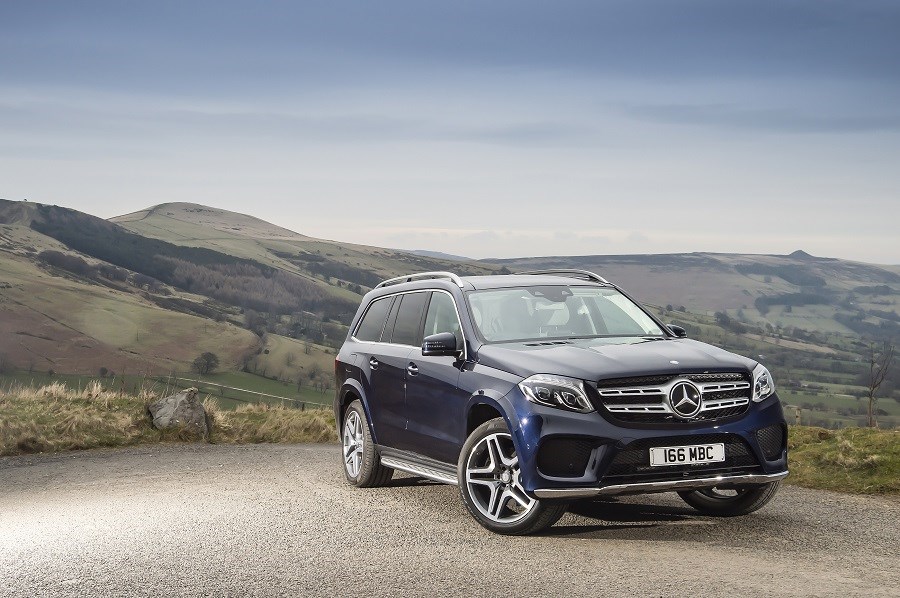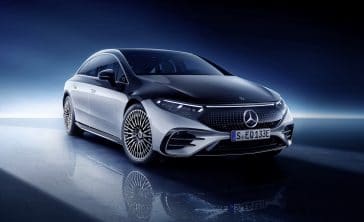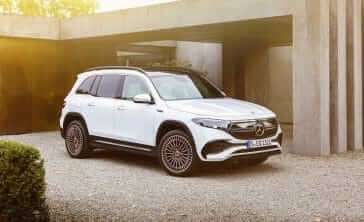Model Review
Mercedes launched the GL as a large luxury SUV in 2006, positioned above the ML (now called GLE), which rivalled the Audi Q7 that was launched the same year.
In 2012, the GL was facelifted and made even more luxurious and tech laden. The facelift even spawned a monstrous V8 powered GL 63 AMG model.
In late 2014, Mercedes announced it was changing the names of multiple models, one of these being the GL. The GL’s name was changed to the GLS at the very end of 2015, with deliveries for the lightly facelifted model beginning at the start of 2016.
Latest Model
Since the GLS debuted at the start of 2016, not all that much has changed. The GLS remains a luxury and imposing SUV that is exceptionally capable of ferrying seven people around in comfort.
For the 2017 model year, the front was changed sparingly, while the rear received a redesigned bumper and full LED rear lights.
At the time of writing, a refreshed GLS is expected to be unveiled and on sale by the end of 2019.
Value for money
The new GLS starts at £73,940, which doesn’t sound too expensive compared to a Range Rover, but next to the Audi Q7, which starts at nearer £50,000, the weight of that price tag becomes heavier. Although, the GLS is exceptionally well equipped. Standard equipment on the AMG Line includes keyless start, lane tracking technology, 21-inch alloy wheels, a panoramic electric sunroof and park assist. The standard interior equipment includes a memory seat package, front and rear heated seats and a Harman Kardon sound system.
Above the AMG Line is the Grand Edition. It used to be known as the ‘designo’ and starts at £82,935. Extra equipment includes an ‘Active Curve System’ which enhances ride comfort, a closing aid for the doors and boot. The interior still gets the designo interior package, with designo upholstery, heated and ventilated front seats, rear sun blinds and climate control for third seat passengers too.
Used GLs are quite good value, although expect to pay high running costs. Early GLs start at around £10,000 with reasonable mileages, although we recommend avoiding these early cars and going for the facelifted GL which came out in 2012. These models currently start from around £26,000.
Nearly-new models are fantastic value – particularly when you consider that £18,000 of savings can be had off list price on a model less than a year old.
Looks and image
While there was quite a significant facelift in 2012 for the GL, the GLS really has not changed visually since. It remains one of the biggest SUVs on sale and it is exceptionally imposing. However, it’s not a particularly good-looking car in our opinion and unfortunately, the styling does little to mask its significant footprint. The interior is slightly better, although it is due a significant update to put it on par with the superb interiors which now feature in other Mercedes models such as the S-Class. However, it is crammed with the finest quality materials, as you would expect on a car of this price. The GLS is definitely best suited to image conscious families who need and want a large SUV.
Driving dynamics are not a strong point of the GLS. While the sheer pace of the GLS 63 AMG is seriously impressive, it is flawed as soon as you enter a corner. The top-heavy stance of GLS equates to significant roll in the corners, although the steering feels weighty and has a good amount of feel to it.
On the plus side, the GLS has a very impressive ride, particularly on the motorway where it is probably best suited. The GLS even comes with air suspension as standard, which does a great job of minimising bumps in the road. The only downside is that those large wheels can slightly hamper ride comfort at lower speeds. It is definitely one of the most relaxing cars you can drive, particularly when paired with the nine-speed automatic gearbox.
Space and practicality
As you would hope for the size of it, the GLS is one of the most spacious cars on the market. It is an enormous car – 110mm longer than a Range Rover – which means the cabin is huge. Even with all seven seats up, it offers 295 litres of boot space, and 680 litres with the third row of seats folded. However, leave just the two front seats in place and it leaves an enormous 2,300 litres of room, which is approaching van territory. The sheer size of the GLS does make parking it in tight spaces a bit of a nightmare, although the amount of parking sensors and standard park assist does help around town and in car parks.
The GLS has never been tested by EuroNCAP, and therefore it doesn’t have an official safety rating. However, the GLS does come with an array of safety equipment that would likely grant it a five-star rating. It comes with plenty of airbags, as well as lane departure warning and automatic braking systems, minimising your chance of getting in a crash in the first place.
Family appeal is where the GLS excels. The sheer size and space of it makes it one of the best SUVs for carrying people around. There is easily enough room for seven adults to sit in comfort on long journeys, as well as room for luggage too. While the GLS’s size may be intimidating for some people, it is absolutely ideal if you are in the market for a large, luxury, family-friendly SUV.
Engines
Mercedes offers two engines in the GLS - one petrol and one diesel - which couldn’t be more different if they tried.
The diesel is a 3.0-litre V6 engine which comes as standard with four-wheel-drive. It produces 255bhp and 620Nm, and is coupled with a 9-speed automatic gearbox. It manages the 0-60mph dash in 7.6 seconds, and will go on to a top speed of 138mph.
At the other end of the spectrum is the fearsome 5.5-litre V8 petrol in the GLS 63 AMG. It produces a huge 577bhp and 760Nm of torque. This also comes with four-wheel-drive, but has a seven-speed AMG ‘speedshift’ gearbox instead, and manages 0-60mph in a swift 4.4 seconds, with a top speed of 155mph.
Running Costs
If running costs are important, the best option is to stay clear of the GLS 63. Fuel bills will be astronomical, as it produces a claimed 23mpg, though you will be extremely lucky if you ever get it over 20mpg. It also produces a whopping 288g/km CO2. This means you will pay £2,070 in tax, as well as a £310 supplement because the GLS costs over £40,000. The diesel doesn’t fair that much better, as it only returns a claimed 37.2mpg, as well as producing 199g/km of CO2, meaning £1,760 for the first year in tax.
Insurance will be expensive too; both the petrol and diesel GLS are in the top insurance group of 50.
Things to look out for
There are not too many common problems which have been reported on the GL and GLS, although owners have questioned the interior quality and power steering which tends to leak. One thing we would strongly recommend, when buying a used GL or GLS, is that it has been well maintained. Unsurprisingly, on a car of this luxury and size, repairs and maintenance will be expensive, which you definitely need to bear in mind if you are purchasing a used vehicle.
Rivals
At the top end of the luxury SUV market, there are not too many rivals. Land Rover is where most of the opposition lies as a range-topping Discovery, Range Rover Sport and the normal Range Rover could all be rivals to the GLS. Elsewhere, the Volvo XC90 and Audi Q7 are also rivals, albeit far cheaper ones. However, the size of the GLS almost puts in a class of its own.
Depreciation
Depreciation may be a bit of a concern on the GLS, particularly on the AMG model which will plummet in value. The GLS is predicted to retain just 40 per cent of its value after three years, far less than the Discovery which retains 60 per cent.
We would recommend buying an ex-demonstrator or nearly new GLS as it will have lost that significant amount of initial value which makes it the best option.





